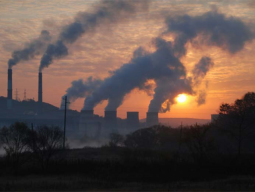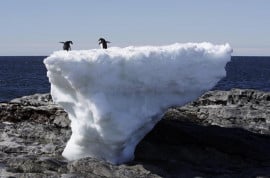
World wetlands day is celebrated on February 2 to mark the adoption of the Ramsar Convention in 1971. Wetlands and climate change, the theme for 2019 highlights the important role of wetlands as a solution to climate change. Wetlands play a significant role in stabilising greenhouse gas emissions and reducing the impacts of climate change.
The Intergovernmental Panel on Climate Change projected climate change to significantly reduce surface water and groundwater resources in dry subtropical regions, intensifying competition for water; increasing extinction risk in freshwater species, especially due to synergistic effects with other drivers; posing a high risk of abrupt and irreversible regional-scale change in the composition, structure and function of freshwater ecosystems; and damaging coastal ecosystems through sea level rise. Responses can be both negative and positive for wetlands. Increased hydropower and biofuels may cause wetland loss while the role of wetlands in carbon sequestration can promote conservation and restoration. Trends in hydrologic processes are influenced by increasing human demands and changes in precipitation and evapotranspiration due to climate change, both creating competition for available water. The supply of freshwater has been subject to increasing pressure from consumption and pollution as populations increase. Water use can be represented by the total water footprint of a region, to inform water management. This provides a cumulative measure of pressure on water supplies by accounting for ‘blue’ water including surface and groundwater used for irrigation, industrial or domestic purposes, ‘green’ water like rainwater stored in the soil used by crops and lost by evapotranspiration and ‘grey’ water includes the amount of freshwater required to assimilate pollutants. The global water footprint increased between 1996 and 2013, with agriculture accounting for 92% of this, causing major disruptions to hydrologic processes.
There are three main drivers of change, including direct drivers that create biophysical change in wetlands such as land use change, pollution, etc, indirect drivers that are the processes in society that create the direct drivers, and global megatrends that are behind several indirect drivers. Effective policy and management for wise use need a good understanding of the drivers of change in wetlands so that the root causes of wetland loss and degradation can be addressed. Effective governance at local, national and regional levels is a key factor for preventing, stopping and reversing the trend of wetland loss and degradation.
In Pakistan many wetlands have been degraded and have lost their significance due to unsustainable exploitation, increased levels of industrial and urban effluent discharge into the aquatic environment, and drought-like conditions prevailing in the southern part of the country. Responses must address many challenges simultaneously. Enhancing the network of Ramsar Sites, and of other protected and conserved areas, ensures a conservation framework. Integrating wetlands into the post-2015 development agenda, and the Sustainable Development Goals, will help achieve wise use. Ramsar has several mechanisms to respond to problems and to measure progress towards goals. Other tools are also needed: legal and policy instruments, economic and financial incentives and sustainable production. Capacity building and encouraging diverse perspectives are both critical to success.
Though the importance of ecosystem management has long been embedded in many traditional cultures, formal environmental policies and legislation started developing in the 19th century in response to environmental problems of industrialisation. The realisation that in the industrialised era human well-being still depends on ecosystems resulted in concepts like the ‘ecosystem approach’ and ‘wise use’. During the last 30 years, general acceptance of wetland ecosystem services and their multiple values has developed. However, full integration of wetland values into economic policy and decision making remains challenging, highlighting the need for continued efforts to educate decision-makers and civil society.
Published in The Express Tribune, February 20th, 2019.
Like Opinion & Editorial on Facebook, follow @ETOpEd on Twitter to receive all updates on all our daily pieces.





















































COMMENTS
Comments are moderated and generally will be posted if they are on-topic and not abusive.
For more information, please see our Comments FAQ